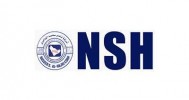Filter interviews by
Coastal Marine Construction & Engineering Assistant Manager HSE Interview Questions, Process, and Tips
Coastal Marine Construction & Engineering Assistant Manager HSE Interview Experiences
1 interview found
I applied via Naukri.com and was interviewed before Nov 2023. There were 4 interview rounds.
(2 Questions)
- Q1. What is safety policy?
- Ans.
Safety policy is a set of rules and guidelines implemented by an organization to ensure the safety and well-being of its employees.
Safety policy outlines the organization's commitment to providing a safe work environment.
It includes procedures for identifying and mitigating hazards in the workplace.
Safety policy also defines roles and responsibilities for employees in maintaining safety standards.
Regular training and c...
- Q2. What is risk assessment?
- Ans.
Risk assessment is the process of identifying, evaluating, and prioritizing potential risks in order to minimize or eliminate them.
Identifying potential hazards and risks in the workplace
Evaluating the likelihood and severity of these risks
Prioritizing risks based on their potential impact
Developing strategies to control or mitigate the identified risks
Regularly reviewing and updating the risk assessment process
Example...
(2 Questions)
- Q1. What is your management style?
- Q2. How do you Access workplace Hazards?
- Ans.
Access workplace hazards by conducting regular inspections, reviewing incident reports, and involving employees in hazard identification.
Conduct regular workplace inspections to identify potential hazards
Review incident reports to learn from past incidents and prevent future ones
Involve employees in hazard identification through training and reporting systems
(2 Questions)
- Q1. What is confined space ?
- Ans.
Confined space is an area that is not designed for continuous occupancy, has limited entry and exit points, and may have poor ventilation.
Confined spaces are typically small and enclosed, making it difficult to enter and exit.
These spaces may contain hazardous substances or conditions that can be harmful to workers.
Examples of confined spaces include storage tanks, silos, tunnels, and sewers.
- Q2. What is Hazards?
- Ans.
Hazards are potential sources of harm or danger that can cause injury, illness, or damage to property.
Hazards can be classified into physical, chemical, biological, ergonomic, and psychosocial categories.
Examples of hazards include slippery floors (physical), toxic chemicals (chemical), infectious diseases (biological), poor ergonomics (ergonomic), and workplace stress (psychosocial).
(2 Questions)
- Q1. What is safety Audit?
- Ans.
Safety audit is a systematic evaluation of an organization's safety management system to ensure compliance with regulations and identify areas for improvement.
Safety audit involves reviewing policies, procedures, and practices related to safety in the workplace.
It includes inspecting physical conditions, equipment, and work processes to identify hazards.
Auditors assess the effectiveness of safety training programs and ...
- Q2. What is attitude?
Interview Preparation Tips
Top trending discussions






Interview questions from similar companies

I applied via Referral and was interviewed before Apr 2023. There was 1 interview round.
(2 Questions)
- Q1. How about your previous company experience?
- Q2. I was tell about my roles and what type of work I have done.
Interview Preparation Tips

Assistant Manager Interview Questions & Answers
S P Singla Constructionsposted on 10 Oct 2024
(1 Question)
- Q1. Accounts related


(1 Question)
- Q1. Project details

I applied via Company Website and was interviewed in Apr 2024. There was 1 interview round.
(1 Question)
- Q1. What is swl in wire rope?
- Ans.
SWL in wire rope stands for Safe Working Load, which is the maximum load that a wire rope can safely handle under specific conditions.
SWL is the maximum load that a wire rope can safely handle without risk of breaking.
It is determined by factors such as the type of wire rope, diameter, construction, and condition.
Exceeding the SWL can lead to failure of the wire rope and potential accidents.
SWL is usually expressed in ...
Interview Preparation Tips


(1 Question)
- Q1. What are your salary expectations?

I applied via Walk-in and was interviewed in Oct 2022. There were 2 interview rounds.

(2 Questions)
- Q1. General questions related daily activities which are carried out at work site. What are the degree of slipping in excavation.
- Q2. What is jsa and HIRA Lifting plan
- Ans.
JSA is Job Safety Analysis and HIRA is Hazard Identification and Risk Assessment. Lifting plan is a document that outlines the safe lifting procedures.
JSA is a process of identifying potential hazards and risks associated with a specific job or task
HIRA is a systematic approach to identify, assess and control hazards and risks in the workplace
Lifting plan is a document that outlines the safe lifting procedures, includi...
Interview Preparation Tips

HSE Officer Interview Questions & Answers
Nasser S. Al Hajri Corporationposted on 11 Mar 2024
I applied via Recruitment Consulltant and was interviewed in Sep 2023. There was 1 interview round.
(1 Question)
- Q1. Mandatory PPE in electrical work
- Ans.
Mandatory PPE in electrical work includes insulated gloves, safety glasses, and hard hats.
Insulated gloves are essential to protect against electric shock.
Safety glasses protect the eyes from potential hazards like sparks or debris.
Hard hats are necessary to prevent head injuries from falling objects or electrical hazards.
Interview Preparation Tips
- Capital Goods

Safety Officer Interview Questions & Answers
Nasser S. Al Hajri Corporationposted on 3 Dec 2024
I applied via Walk-in and was interviewed before Dec 2023. There were 2 interview rounds.
Objective types questions
(2 Questions)
- Q1. Safety management
- Q2. Safety workplace

Safety Officer Interview Questions & Answers
Nasser S. Al Hajri Corporationposted on 29 Aug 2022
I applied via Recruitment Consulltant and was interviewed in Jul 2022. There were 2 interview rounds.

H2s, confined space hazard and precaution, what's different b/w pre commissioning & commissioning, PSV, SWL, STEL, What's is ur pervious experience eg. Flare erection, tank erection, pre commissioning & commissioning, 11kv crude substation.
Interview Preparation Tips
- Nebosh igc
Coastal Marine Construction & Engineering Interview FAQs
Tell us how to improve this page.
Coastal Marine Construction & Engineering Interviews By Designations
- Coastal Marine Construction & Engineering Mechanical Engineer Interview Questions
- Coastal Marine Construction & Engineering Geotechnical Engineer Interview Questions
- Coastal Marine Construction & Engineering Laboratory Engineer Interview Questions
- Coastal Marine Construction & Engineering CAD Executive Interview Questions
- Coastal Marine Construction & Engineering Assistant Manager HSE Interview Questions
- Coastal Marine Construction & Engineering Civil Supervisor Interview Questions
- Coastal Marine Construction & Engineering Senior Executive Engineer Interview Questions
- Coastal Marine Construction & Engineering Store Keeper Interview Questions
- Show more
Interview Questions for Popular Designations
- Assistant Electrical Engineer Interview Questions
- Assistant Manager - EHS Interview Questions
- Assistant Engineer Mechanical Interview Questions
- Electrical Engineer Interview Questions
- Engineering Assistant Interview Questions
- Assistant Engineer Interview Questions
- Assistant Manager Safety Interview Questions
- Assistant Executive Engineer Interview Questions
- Show more
Coastal Marine Construction & Engineering Assistant Manager HSE Interview Process
based on 1 interview
Interview experience
Interview Questions from Similar Companies
|
Executive Accountant
22
salaries
| ₹2.2 L/yr - ₹3.7 L/yr |
|
Geotechnical Engineer
15
salaries
| ₹3.2 L/yr - ₹7.8 L/yr |
|
Assistant Manager
13
salaries
| ₹6 L/yr - ₹14.2 L/yr |
|
Site Engineer
11
salaries
| ₹2.8 L/yr - ₹4.8 L/yr |
|
Senior Engineer
9
salaries
| ₹6 L/yr - ₹8 L/yr |

Sterling & Wilson

Nasser S. Al Hajri Corporation

Navayuga Engineering Company

B.L. Kashyap & Sons
- Home >
- Interviews >
- Coastal Marine Construction & Engineering Interview Questions >
- Coastal Marine Construction & Engineering Assistant Manager HSE Interview Questions









